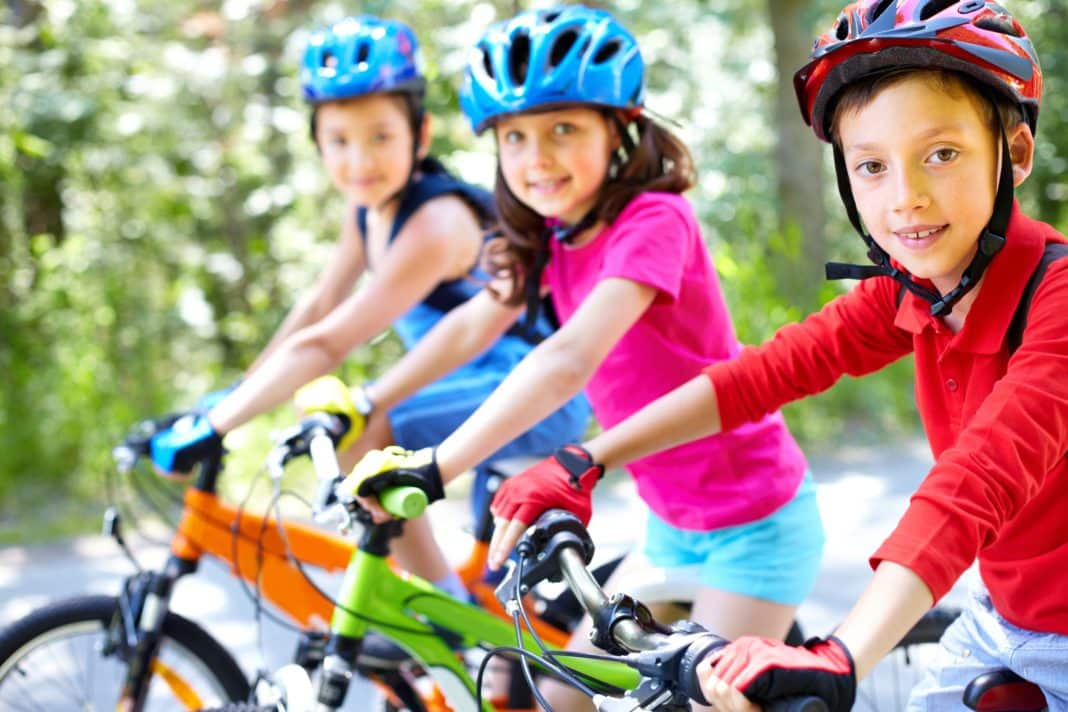The role of the families and adults responsible for children is fundamental, setting an example as road users and teaching how to make good use of the bicycle.
To reduce the risk of minors when they use the bicycle as a means of movement or leisure, the experts of the Alianza Española para la Seguridad Vial Infantil (Spanish Alliance for Child Road Safety) give the following recommendations:

Helmet: The use of a helmet for children under 16 years of age is mandatory both in the city and on interurban roads. It is important that the size of the helmet fits the child’s head and that it is correctly fastened. AESVi recommends that those over 16 also use a helmet because it is an essential element of protection and that it can save lives in the event of a fall.
Equipment: It is important that children wear appropriate clothing and equipment for riding a bicycle: shoes that support their feet well and avoid possible snagging with the pedals, gloves that protect their hands in the event of a fall, and clothing that facilitates freedom of movement.
Signal manoeuvres: When they are out and about on the bike they should signal the manoeuvres, and above all be aware that you have to be careful with pedestrians, adjusting the speed and circulating with caution.
Families: Parents or responsible adults must accompany their children until they are autonomous and at this time it is essential that they comply with traffic regulations: traffic lights, zebra crossings, speed limits … In this way they will set an example and children will be educated to be responsible and respectful adults with other road users.
Not on the pavement: As a general rule, cyclists cannot ride on the pavement unless it is marked as a bicycle lane for shared use with pedestrians. In the city and on the road, you must circulate on the bike lanes whenever they are available.
Get off the bike: To cross a pedestrian crossing, the cyclist must get off the bicycle and cross it on foot, pushing the bicycle, otherwise they will not have priority.
In parallel: On the road, you can only circulate in parallel in sections with good visibility and without traffic jams. Cyclists should always stick as far as possible to the right side of the road.
Illumination: Whenever the light conditions are low, they have to use lighting fixtures and reflective clothing, especially in autumn and winter. The regulations specify that bicycles, to circulate at night, on sections of roads marked with the ‘tunnel’ sign or when there are meteorological or environmental conditions that significantly reduce visibility, must have front and rear position light and rear reflector.
Bell. According to the regulations, to be able to circulate on any road, urban or interurban, bicycles must be equipped with a bell, prohibiting the use of other different acoustic devices.
If the child rides a bike to school
The school must set up an area to leave the bicycle for children who use this means of movement.
The backpack should not be overloaded with weight, as it could destabilise the child.
It is recommended that adults accompany children the first few times, identifying dangerous points, crossings and crosswalks (and the way to cross). It should also be explained to them that they must circulate in a calm and safe way.
Attention parents!
The AESVi child road safety experts call on all parents and adults responsible for a minor to increase protection on any type of journey, especially on daily commutes, which is where the guard is usually lowered.





